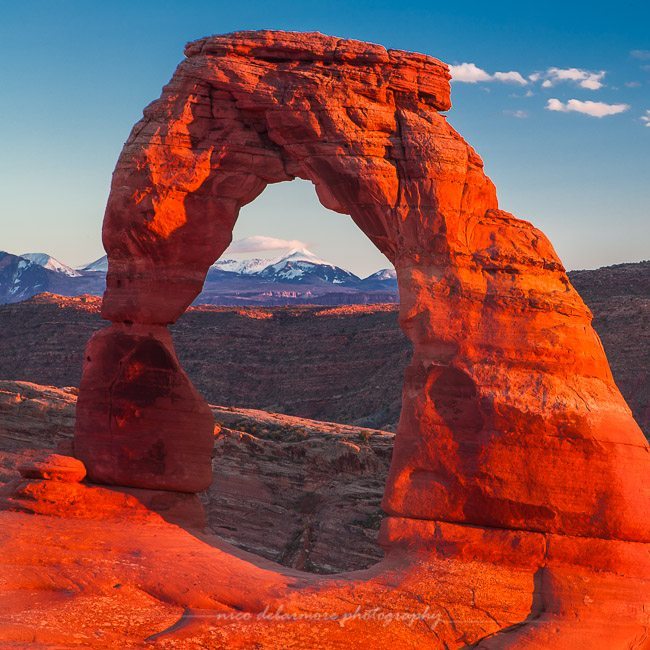
Delicate Arch at Sunset
Behold, the harsh and dramatic landscape of Arches National Park. A little less than 4 miles north of Moab, UT, this national park has 2000+ sandstone arches on over 76,000 acres of land at about 5,000 ft. elevation.
Geology Lesson
I think knowing a bit about the geology of an area can go a long way in appreciating its features – this is especially true for Arches National Park. Most importantly – how the heck were these arches created?!

Sandstone arch formation – from geocaching.com
In the mid-to-late Cretaceous Period (about 100 million years ago), there was an inland sea stretching across the United States from the Gulf of Mexico to Canady and the Arctic Ocean called the Western Interior Seaway. Step back for a second and think about that – 100 MILLION years. That is an unfathomable amount of time, and makes yours and my existence on this earth feel a bit trivial – but I digress. Sixty-five million years ago the Seaway dried up and left a barren seabed. Arches National Park is located in this dry seabed area. Geologic uplifting raised sandstone buried below this seabed to expose the rock to the forces of erosion. Rain washed down the rock, carrying away sediment to the Colorado River. Freezing/thawing cycles fractured the rock to break of large chunks of stone. Arches as sections of sandstone remained standing despite extreme their extreme erosion.
Park Avenue
The first stop along the scenic drive in Arches National Park is Park Avenue. A trail runs for about one mile through a dramatic landscape of steep sandstone canyon. The bottom is flat, and the sides rise abruptly in large sandstone slabs that provide the namesake for this area. When I arrived it was just past midday and while the scenery was incredible, the lighting was not favorable. I did not photograph Park Avenue because I want my images to show a scene at its best. This was my opportunity to get a grasp of the location and take mental notes – I will return when the light is more favorable.
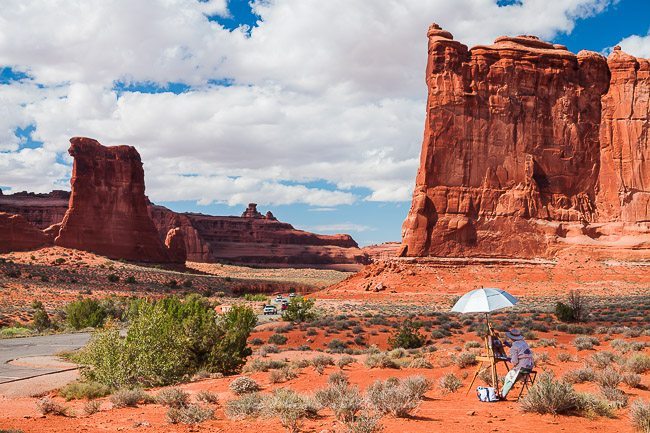
Painter at Courthouse Towers
Courthouse Towers
Turning around the bend on the scenic drive the Organ rises up on the right. This is the other end of the Park Avenue trail, and a pull-off is provided. At first I felt the same feeling as I did at Park Avenue regarding the light. No good – the high sun in the bright blue sky casts dark and crisp shadows that cut into my compositions, hiding detail and adding harsh lines across the rock. As it happened, I came across a painter, standing by her easel below a shade umbrella. How fortunate! She could be my foreground subject, with soft diffused light through her umbrella that would keep detail and anchor the viewer to the idea of a scene within a scene. You see, the harsh shadows on a rock become less of a difficulty when those rocks are now the background, setting a dramatic scene for something that occurs in the foreground. We are aware of the rocks, and their shadows, but our attention is really on the painter and the idea that she is in a dramatic, inspiring landscape.
Balanced Rock
A popular feature of Arches National Park, Balanced Rock has its own pull-out about 9 miles down the scenic drive. The formation is a tower of stone that supports an enormous “rock” above it for a total height of about 128 ft. There is a trail from the parking area to stroll around Balanced Rock, and I urge you to check it out up close. In my opinion, the Balanced Rock was interesting, but the background to this area was much more moving. The arches and formations of the park stretch out into the distance with a striking backdrop of the La Sal snow-covered mountains. With the sun poking in and out of the clouds the scene was rendered in dramatic lighting and was much more “photographable” than Balanced Rock. A scene can be interesting and beautiful, but not all of them are photogenic. I didn’t particularly like any of my Balanced Rock images – I’ll have to try again next time.
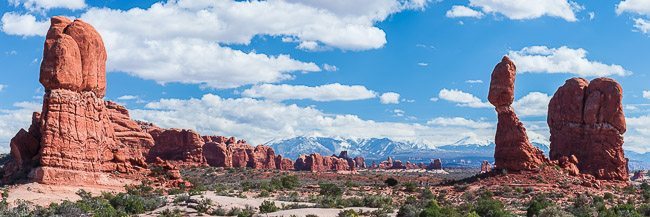
Turret Arch & The Windows
The Windows, or the “Spectacles” are a pair of arches that form the appearance of two eyes of rock. You’ll know it when you see it. The best part of the Windows, from a photographer’s perspective, is that they frame Turret Arch in the distance. Most common is the view of Turret Arch through the North Window. This scene is a particularly challenging one due to dynamic range and lighting conditions. Looking through the north window to the west is Turret Arch. This makes this a really great sunrise location as the sun illuminates both formations as it rises in the east. Sunset will be challenging, but could pay off if there is the right type of clouds above.
Turret arch deserves some exploring despite not being the most photogenic formation on its own. The Windows Trail snakes around all of these formations and is a nice location to stretch the legs for a short hike.
Double Arch
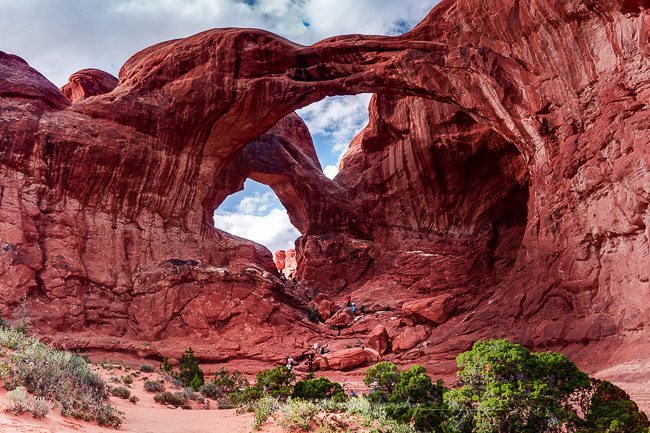
Double Arch
Here is another well-known feature in Arches National Park – the Double Arch. This was one of my favorite locations because of its grandeur. The double arches are so enormous and imposing, and visitors are able to hike up directly beneath the arches. Some interesting tidbits of information: This is a pothole arch, formed by water from above rather than the side, and this location was used in Indian Jones and the Last Crusade. In my opinion, the most photogenic view is from without the arches looking in. The composition is a bit troublesome once directly below the formation.
Delicate Arch
Here is the granddaddy of them all – the most famous arch in all the lands. This is the arch at the top of this article. Delicate Arch is in fact on Utah license plates. This arch requires a longer walk that other locations in the park – 3 miles/480 ft vert round trip. The trail is really interesting, starting as a normal dirt path and then transitioning to bare slickrock sandstone and follows along a rock ledge just before reaching the Arch. This is a very popular location and will be jam packed with photographers at every sunset. Come in the winter if you want more elbow space.
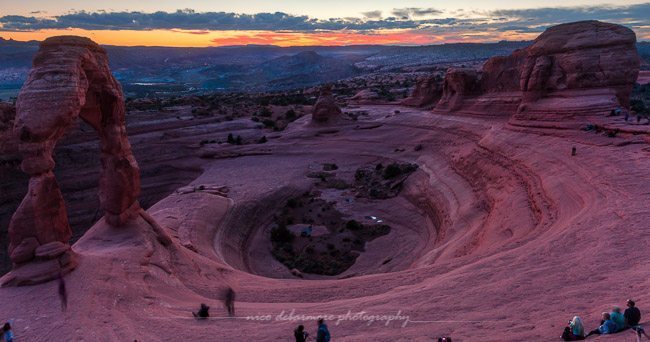
A view you don’t often see published – the entire area of Delicate Arch

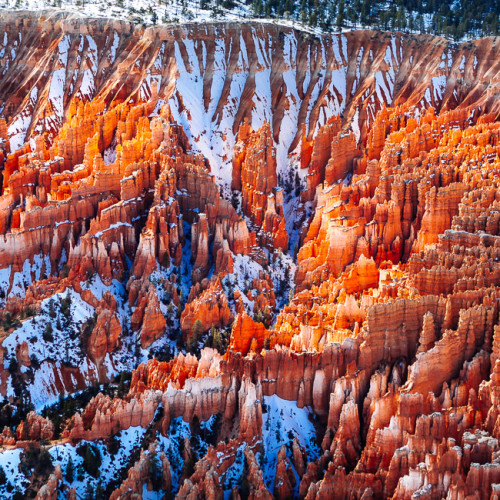
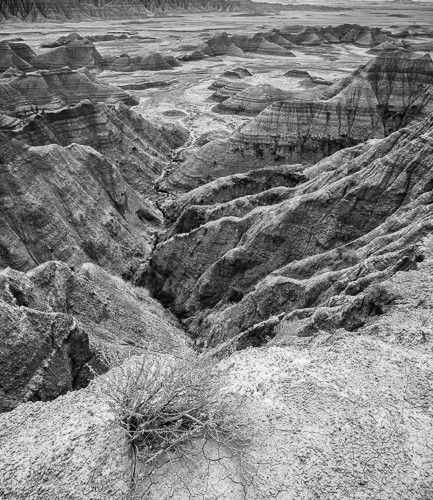
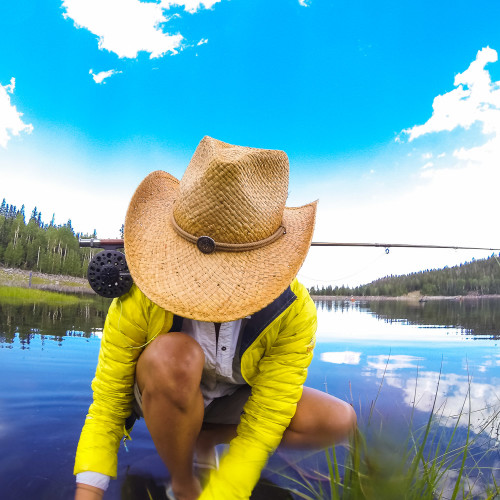
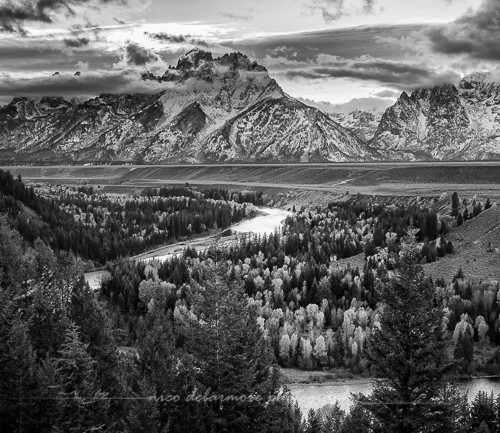
Leave a reply